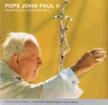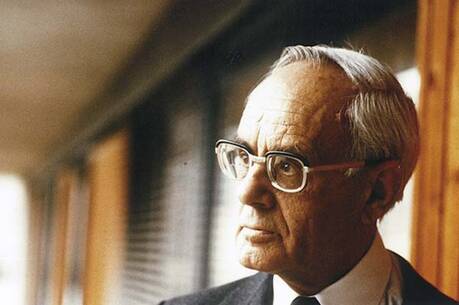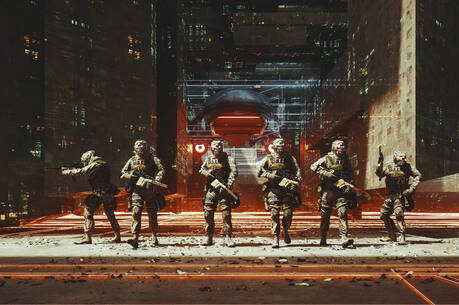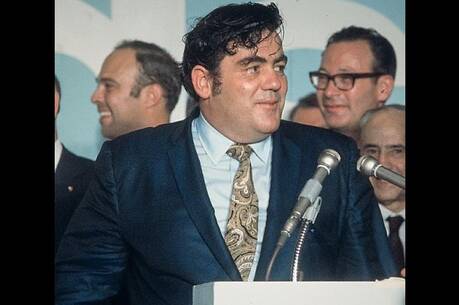God's Globetrotter
Pope John Paul II will celebrate the 25th anniversary of his election to the Chair of Peter on Oct. 16, 2003. That makes this a timely publication. His papacy has been the most visible in history; this pope “reaches out across borders” that are not just geographic but also social, political, cultural and religious. To do justice to such a world figure, it is a distinct advantage to have this book by an international multimedia news agency like Reuters. Its staff numbers 18,000 people in 97 countries, including 2,500 journalists, photographers and television professionals in 198 bureaus across the world.
We have come a long way since the year of the three popes in 1978. Pope Paul VI had died on a hot Sunday in August, and his funeral and the ensuing conclave caught the attention of the television media around the world. This was the start of regular televised coverage of the papacy instead of the earlier sporadic attention to extraordinary events, like the address of Pope Paul VI to the United Nations in New York on Oct. 4, 1965. The election of John Paul II on Oct. 16, 1978, marked the beginning of a new era, which started on the balcony over the main entrance to St. Peter’s Basilica on the evening of that day when Karol Wojtyla was introduced as the newly elected John Paul II. Instead of simply blessing the people in St. Peter’s Square, as was the custom, he addressed them in Italian and won their immediate sympathy by asking them to help him learn the language. John Paul II seized the opportunity to speak to the world by means of television from the very first moment of his papacy, and he has never stopped doing it. His features have been seen and his voice has been heard “to the ends of the earth.”
The photographs, most of them taken by Reuters photographers, are understandably the heart of this book. Individually they are eye-filling, to be looked at again and again. As a collection, they capture defining moments and key figures in the life of the Pilgrim Pope as he makes his way to all the continents to meet the “high and mighty” of this world, but also the “little ones.” There are vivid shots of the attempt on his life in St. Peter’s Square, and one of the recovering pope in a hospital gown, a view that horrified some of the very traditionally minded hierarchy, but that won great sympathy from the many people who had suffered the indignities of such a garment. There is the intimate photograph of the pope and his would-be assassin, Mehmet Ali Agca. We see the pope with an array of world figures, of contrasting views and persuasions, including Mikhail Gorbachev, Lech Walesa and General Jaruzelski; U.S. Presidents Reagan, Clinton and the Bushes, father and son; but also Fidel Castro, Yasir Arafat and Yitzhak Rabin. In the first of two especially suggestive shots, John Paul is looking out from Jordan’s Mount Nebo, the site from which Moses first saw the promised land, while the other shows him tucking his note of petition into a crevice of the Western Wall of the Temple in Jerusalem, the holiest site in Judaism.
There are views of crowds of hundreds of thousands who flocked to see and hear him and perhaps even to touch him. But there are also many views of the pope embracing a small child or an infant, or greeting a group of children. The very first photo captures the pope tenderly kissing the forehead of an infant. Despite the crowds at the pope’s weekly audience in St. Peter’s Square, it can be seen that the pope simply melted when he saw a child in the crowd. People would hold up a child in plain view of the pope, and he would unfailingly go over to greet the child and the parents.
The text provides a strong and fitting complement to the images, with well-written contributions that help the reader understand the context and background. Covering only selected major areas in the pope’s life, the narratives are written by professional journalists with proven expertise in their respective fields. The life and journeys of the pope are handled by Philip Pullella, a veteran Vatican reporter who has accompanied the pope on many of his trips. Likewise, other seasoned journalists describe the significance of John Paul’s Polish background and his trips to Poland, as well as his relations with the Jewish people.
The final piece, “A Paradoxical Papacy,” by Tom Heneghan, a veteran of 25 years of reporting from 30 countries for Reuters, presents John Paul’s pontificate as “a study in contrasts.” On the one hand, “Never has the Church had such a high-profile pope bringing Christ’s message to all parts of the globe.” But then, “Within his Church of a billion souls, however, opinions have been as divided over John Paul’s policies as they have been united about his personality.” In an evenhanded manner, the author describes the challenges met by John Paul II, which will also face his successor, giving the views of the different sides on the issues.
Interwoven throughout are four collections of papal remarks, under the title “In His Own Words.” These brief, incisive sayings are easy to remember and very quotable, as we can see in this remark he made to a group of Roman workers in 1979: “I was a laborer for four years and for me those four years of work are worth two doctorate degrees.” Five informative color graphics are most helpful to the reader.
Two introductions by Nobel Peace Prize winners at the beginning of the book deserve to be read again at the end. Mikhail Gorbachev, last president of the Soviet Union, writes: “I am convinced that John Paul’s mission is to serve mankind. His motives are never mundane, his thoughts know no borders.... I wish from the bottom of my heart that Heaven allows him to serve mankind under God’s guidance for as long as possible.” Lech Walesa, former president of Poland and first leader of the Solidarity trade union movement, adds: “Defeating communism and ending the Cold War was a success, with many fathers. All of them deserve credit for helping to achieve this peacefully. But it is impossible not to bow, as a dutiful son, before the paramount champion of the cause of freedom—Pope John Paul. I do so looking back at the miracle [he] wrought, which gave meaning and confidence to our efforts and changed the face of the world.”
This article also appeared in print, under the headline “God's Globetrotter,” in the June 23, 2003, issue.








